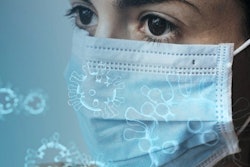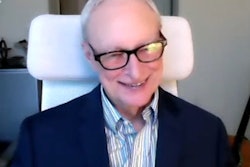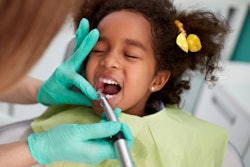
Peri-implantitis is one of the more common diseases plaguing patients with dental implants. As a periodontist, it is critical to actively seek out new solutions to treat this disease by constantly consuming new information presented in studies. This helps to determine the best option available for patients today, which is constantly evolving.
 Dr. Samuel Low
Dr. Samuel LowPeri-implantitis, an inflammatory disease, can begin as peri-implant mucositis as a result of biofilm accumulation and progresses to bone loss around the implant. This can result in additional surgical procedures and even loss of the implant. Although prevention of peri-implantitis through early recognition is ideal, there are times when a patient presents to us with an established peri-implantitis diagnosis. In those cases, dental professionals must choose the equipment and procedures that will be the most beneficial for the patient and the practice.
Two recent studies, published in the International Journal of Periodontics & Restorative Dentistry and Lasers in Medical Science, demonstrate that erbium, chromium-doped yttrium, scandium, gallium, and garnet (Er,Cr:YSGG) laser technology has myriad benefits for the treatment of peri-implantitis, offering a noninvasive, effective treatment option that dental professionals can offer to their patients.
By the numbers: Decontamination and reconstructive therapy
In the study published in the International Journal of Periodontics & Restorative Dentistry, researchers evaluated the restoration of bone-to-implant contact on infected dental implant surfaces following decontamination with an Er,Cr:YSGG laser and reconstructive therapy.
Dr. Myron Nevins and colleagues found that the dental laser was effective in the treatment of peri-implantitis. Data showed that the Er,Cr:YSGG laser treatment, which was carried out at 1.5 W, an air/water percentage of 40%/50%, and a pulse rate of 30 Hz, was beneficial in debridement of a titanium implant surface and the regenerative treatment that followed.
By the numbers: Decreasing bacteria
In the other study, published in Lasers in Medical Science, Drs. David Kim, Chia-Yu (Jennifer) Chen, and Charles Pham assessed the effectiveness of Er,Cr:YSGG lasers in decreasing bacteria.
The findings of this study demonstrated that the Er,Cr:YSGG laser also has the ability to effectively reduce bacteria from zirconia discs. As there are a high number of zirconia discs being placed around the world, this evidence suggests the lasers are beneficial for the various types of implants that a patient may have.
Minimally invasive treatment
Research shows that approximately 56% of patients with dental implants may have peri-implantitis, further reinforcing the significance of the disease among the population. For dental professionals who choose to use an all-tissue laser when treating peri-implantitis, their patients are likely to have excellent postoperative wound healing due to the minimally invasive techniques used by lasers. Additionally, decontamination of implant surfaces with laser devices can provide an environment for regeneration and retention of many dental implants.
Ideally, peri-implant mucositis is treated by dental professionals before it becomes peri-implantitis. However, if it is too late for that by the time a patient arrives at the office, periodontists and dentists who use Er,Cr:YSGG lasers should feel empowered knowing that they are providing patients with the most beneficial technology available to treat both the symptoms and source of this ever-increasing disease.
Dr. Samuel Low was named vice president, dental and clinical affairs, and chief dental officer of Biolase in October 2016. Low is a professor emeritus at the University of Florida College of Dentistry and associate faculty member of the Pankey Institute. He has 30 years of private practice experience in periodontics, lasers, and implant placement. He is also a diplomate of the American Board of Periodontology and past president of the American Academy of Periodontology.
The comments and observations expressed herein do not necessarily reflect the opinions of DrBicuspid.com, nor should they be construed as an endorsement or admonishment of any particular idea, vendor, or organization.



















